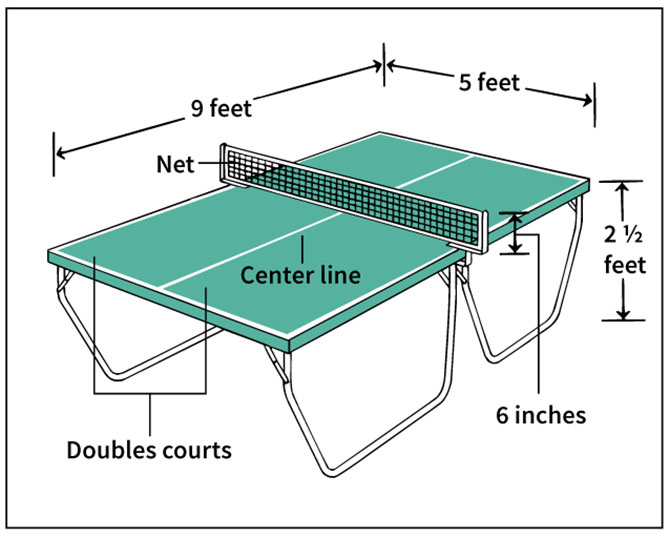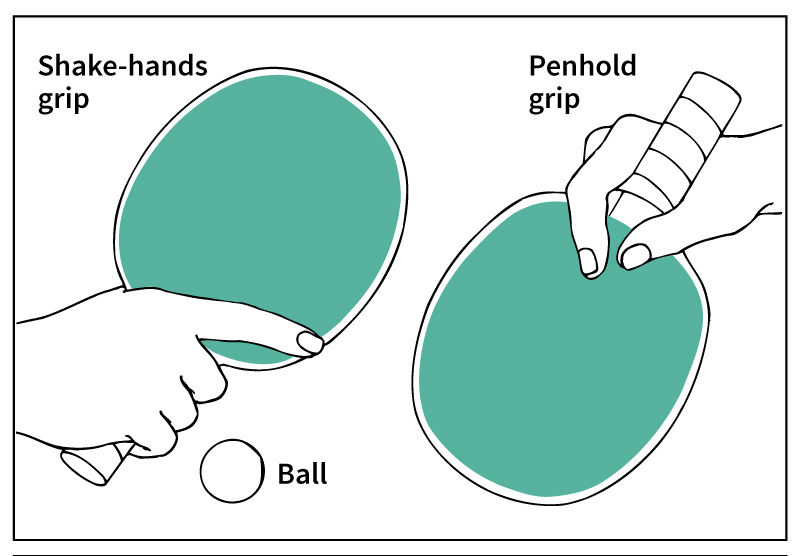Table tennis, or ping-pong, is a lively indoor game that resembles a miniature version of tennis. The players use rackets, which are often called paddles, to hit a ball back and forth over a net that stretches across a table. They score points by hitting the ball so their opponent or opponents cannot return it. Table tennis may be played by two or four persons. If two persons play, the game is called singles. If four play, the game is called doubles.
Table tennis developed in Britain during the late 1800’s. Today, it is a popular form of recreation and an international sport. Players from about 140 countries belong to the International Table Tennis Federation (ITTF). The ITTF holds a world championship tournament every two years. USA Table Tennis sponsors national tournaments, including the U.S. National Championships and the U.S. Open.
Equipment
for table tennis consists of a table, net, rackets, and ball. The table measures 9 feet (274 centimeters) long, 5 feet (152.5 centimeters) wide, and 30 inches (76 centimeters) high. Most tables are dark green with a white line along the edges. A white center line runs the length of the table. The center line divides the table into courts that are used for doubles. The net, which is suspended between two posts, extends across the width of the table at its center. The net measures 6 inches (15.25 centimeters) high.

The rackets may be any shape, size, or weight. All are made of wood and are covered with pimpled or smooth sponge. Each side must be of a uniform dark color, though the sides may be different colors. The covering material cannot be more than 1/6 inch (4 millimeters) thick on either side of the racket.
The ball is round and hollow and made of Celluloid. It measures 40 millimeters (11/2 inches) in diameter and weighs 2.7 grams (1/10 ounce).

How the game is played.
Table tennis players toss a coin to determine who serves first. The server places the ball on the palm of the hand, throws it up vertically, and hits it with the racket. When throwing the ball, the server must keep the fingers straight and together, and the thumb extended. The hand must be behind the end of the table when the server hits the ball. The ball must bounce on the server’s side of the net, clear the net, and bounce on the opponent’s side.
For a good return, a player must hit the ball after one bounce so that it clears the net and bounces on the opponent’s court. Volleying (hitting the ball before it bounces) is not allowed. Play continues until one person misses the ball, hits it off the table, or hits it into the net. When a player fails to make a good serve or a good return, the opponent scores a point. After every two points, the other player serves.
The player who first scores 11 points wins the game. However, the winner must have at least a two-point lead. If both players score 10 points, they alternate serving after each point until one person leads by 2 points. A match consists of either three out of five games or the best of any odd number of games.
When playing doubles, the player who is serving must do so from his or her right-hand court into the opponents’ right-hand court. The teammates must alternate in hitting the ball on the returns.
